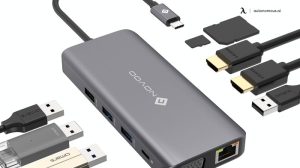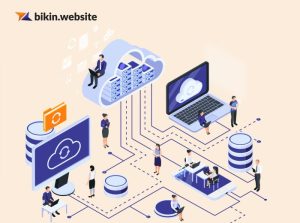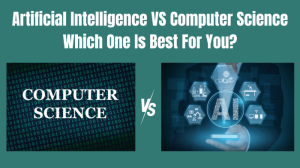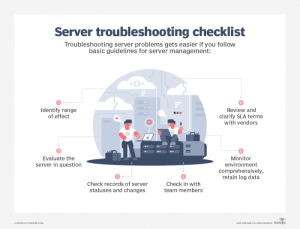Step into the digital realm where education meets innovation! How computer technology is changing education unfolds a fascinating journey filled with technological wonders that are reshaping the way we learn. Get ready to delve into a world where traditional classrooms are evolving into interactive digital hubs!
From mobile computing to computer gadgets, this topic explores the dynamic landscape of educational technology, offering insights into the future of learning.
Mobile Computing
Mobile computing has completely transformed the education sector, providing students and educators with access to information and resources anytime, anywhere. With the rise of smartphones, tablets, and laptops, learning is no longer confined to the traditional classroom setting.
Benefits of Mobile Devices in Enhancing Learning Experiences
- Increased accessibility to educational content and resources.
- Facilitates collaborative learning and communication among students and teachers.
- Engages students through interactive learning apps and multimedia tools.
- Personalized learning experiences tailored to individual student needs.
Challenges of Integrating Mobile Technology in Educational Settings
- Ensuring equal access to devices and reliable internet connectivity for all students.
- Managing distractions and maintaining focus during class time.
- Security and privacy concerns related to student data and online activities.
- Training educators to effectively incorporate mobile technology into lesson plans.
Examples of Successful Mobile Learning Initiatives
One example is the use of educational apps like Kahoot! in classrooms to gamify learning and increase student engagement.
Another successful initiative is the implementation of 1:1 device programs in schools, providing each student with a tablet or laptop for learning purposes.
Computers Security
In today’s digital age, computer security is of paramount importance in educational institutions to protect sensitive data, personal information, and ensure uninterrupted learning experiences for students and staff.
Importance of Computer Security in Educational Institutions
Ensuring computer security in educational institutions is crucial to safeguard student records, financial information, research data, and other confidential details from cyber threats. A breach in security can disrupt operations, compromise sensitive data, and damage the reputation of the institution.
Common Cybersecurity Threats Faced by Schools and Universities
- Phishing attacks targeting students and staff through fraudulent emails or websites.
- Ransomware attacks that encrypt data and demand payment for its release.
- Malware infections that can spread through networks and compromise system integrity.
- Data breaches leading to the exposure of sensitive information.
Role of Antivirus Software in Protecting Educational Computer Systems
Antivirus software plays a crucial role in detecting and removing malware, viruses, and other malicious threats from educational computer systems. It provides real-time protection, scans for vulnerabilities, and helps in preventing unauthorized access to data.
Best Practices for Ensuring Data Security in an Educational Environment
- Regularly update software and operating systems to patch security vulnerabilities.
- Implement strong password policies and multi-factor authentication for access control.
- Train students and staff on cybersecurity best practices to prevent social engineering attacks.
- Backup data regularly and store it securely to mitigate the impact of ransomware attacks.
Computers Software

Educational software plays a crucial role in transforming the way students learn and teachers instruct. It offers interactive learning experiences, personalized feedback, and the ability to cater to different learning styles. Let’s explore the impact of educational software on student learning outcomes and the various types of software used in classrooms.
Impact of Educational Software
- Educational software enhances student engagement by making learning more interactive and fun.
- It provides personalized learning experiences, allowing students to progress at their own pace.
- Feedback from educational software helps teachers track student progress and identify areas for improvement.
- Interactive simulations and virtual labs help students grasp complex concepts more effectively.
Types of Educational Software
- Learning Management Systems (LMS): Platforms like Moodle and Canvas help teachers organize course materials and assignments.
- Subject-Specific Software: Programs tailored to specific subjects like math, science, or languages provide targeted practice and instruction.
- Assessment Software: Tools like Kahoot and Quizlet help teachers create quizzes and assessments for students.
- Collaboration Tools: Software like Google Workspace promotes collaboration among students on projects and assignments.
Innovative Software Applications
- Virtual Reality (VR) Apps: VR applications like Google Expeditions offer immersive learning experiences in history, science, and more.
- Adaptive Learning Platforms: Software like DreamBox adapts to each student’s learning style and pace, providing personalized instruction.
- Game-Based Learning: Platforms like Minecraft Education Edition turn learning into a game, making it more engaging for students.
Software Customization for Diverse Learning Needs
- Customizable educational software allows teachers to tailor instruction to meet the diverse needs of students.
- Adaptive learning algorithms can adjust difficulty levels based on student performance, ensuring that each student receives appropriate challenges.
- Features like text-to-speech or translation tools help students with disabilities or language barriers access educational content more easily.
Computers Systems
In modern educational settings, computer systems play a crucial role in enhancing teaching and learning processes. These systems are utilized for various purposes, such as managing data, facilitating communication, and providing access to educational resources.
Integration of Learning Management Systems (LMS) in Schools
Learning Management Systems (LMS) have revolutionized the way education is delivered in schools. These systems allow educators to create online courses, track student progress, and provide interactive learning materials. By integrating LMS into schools, teachers can offer personalized learning experiences and students can access educational content anytime, anywhere.
Cloud Computing in Educational Institutions
Cloud computing has significantly transformed the way educational institutions manage data. By storing information on remote servers, schools can easily access and share resources, collaborate on projects, and streamline administrative tasks. This technology has improved data security, scalability, and cost-effectiveness in education.
Future Trends of Computer Systems in Education
Looking ahead, the future of computer systems in education is promising. With advancements in artificial intelligence, virtual reality, and augmented reality, educators can expect more immersive and interactive learning experiences for students. Additionally, the use of data analytics and machine learning will enable personalized learning paths and enhance student outcomes.
Computers Technology
Computer technology has revolutionized education by providing innovative tools and resources to enhance the learning experience for students and educators. From interactive whiteboards to online learning platforms, the evolution of computer technology has significantly impacted the way knowledge is shared and acquired in the classroom.
Virtual Reality and Augmented Reality in Classrooms
Virtual reality (VR) and augmented reality (AR) are transforming traditional teaching methods by creating immersive and engaging learning environments. Students can now explore historical landmarks, dissect virtual organisms, and conduct science experiments in a simulated setting. These technologies enhance student engagement and retention by making learning more interactive and personalized.
Artificial Intelligence in Teaching Methods
Artificial intelligence (AI) is being utilized to personalize learning experiences, provide real-time feedback, and create customized study plans for students. AI algorithms can analyze student performance data to identify areas for improvement and tailor educational content to meet individual needs. Virtual tutors powered by AI technology are also assisting students with homework and test preparation, offering a personalized learning experience.
Internet of Things (IoT) Devices in Education
The Internet of Things (IoT) is reshaping educational practices by connecting devices and systems to create a more efficient and interactive learning environment. Smart classrooms equipped with IoT devices can automate routine tasks, monitor student attendance, and adjust classroom temperature and lighting based on student preferences. IoT devices also enable educators to track student progress in real-time and provide timely interventions to support student learning.
Computers Gadgets

Computers gadgets are revolutionizing the way students learn and interact in educational settings. These innovative tools are enhancing the learning experience by providing engaging and interactive opportunities for students to explore and understand various subjects.
Interactive Whiteboards
Interactive whiteboards have become a popular educational gadget in classrooms around the world. These digital displays allow teachers to present information in a dynamic and interactive way, making learning more engaging for students. By incorporating multimedia elements such as videos, images, and interactive software, interactive whiteboards help students visualize concepts and actively participate in lessons.
Robotics Kits for Coding and STEM
Robotics kits are being used to teach students coding and STEM (Science, Technology, Engineering, and Mathematics) subjects in a hands-on and engaging manner. These kits enable students to build and program robots, fostering critical thinking, problem-solving, and creativity skills. By working with robotics kits, students can apply theoretical knowledge to real-world scenarios, preparing them for future careers in technology and engineering fields.
Wearable Technology for Student Monitoring
Wearable technology devices such as smartwatches and fitness trackers are being utilized to monitor student progress and engagement in educational settings. These devices can track students’ physical activity, sleep patterns, and overall well-being, providing valuable insights for educators to tailor learning experiences based on individual needs. By analyzing data collected from wearable technology, teachers can identify areas for improvement and offer personalized support to enhance student learning outcomes.
Ultimate Conclusion
As we wrap up our exploration of how computer technology is transforming education, it’s clear that the digital revolution has opened up new possibilities for students and educators alike. Embracing these technological advancements is key to ensuring a brighter and more innovative future in the realm of learning.
Query Resolution
How can mobile computing benefit education?
Mobile computing offers flexibility and access to educational resources anytime, anywhere, enhancing the learning experience for students.
What role does artificial intelligence play in education?
Artificial intelligence is used to personalize learning, provide instant feedback, and create adaptive learning environments for students.
Why is computer security crucial in educational institutions?
Computer security is vital to protect sensitive student data, prevent cyber threats, and ensure a safe online learning environment.
How does virtual reality impact classroom learning?
Virtual reality immerses students in interactive experiences, making complex concepts more engaging and easier to understand.




